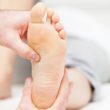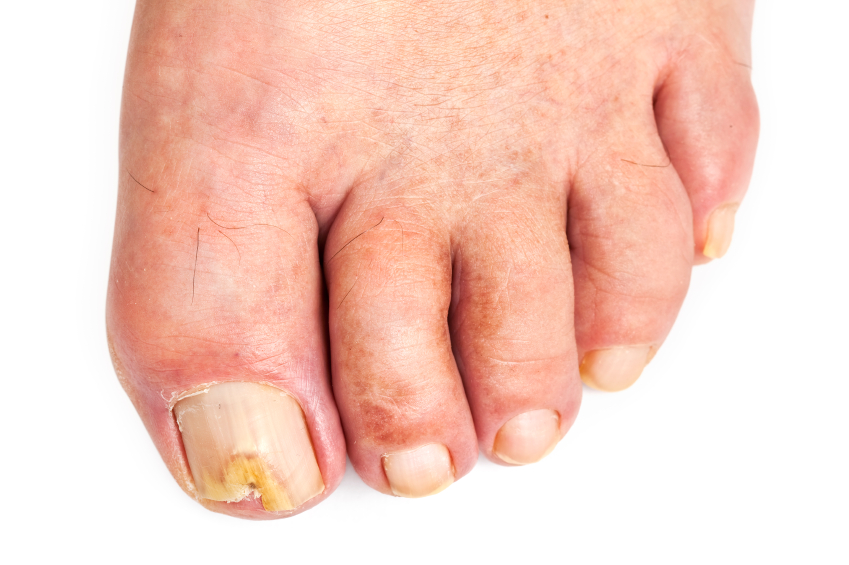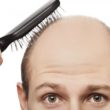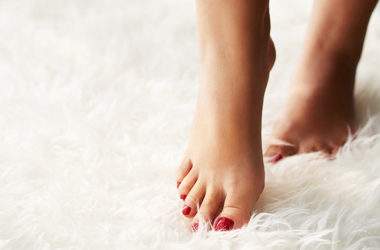Fungal nail infections are yellowish, thickened and jagged nails that can affect both toenails and fingernails. However, fungal nail infections occur most of the time to the toenails than the fingernails. These unsightly and embarrassing infections are quite common to many people. It may not usually signal pain at first but if left untreated, the infection may spread and could cause complications later on. Once the infection gets painful, you cannot wear closed footwear as well as you will get a hard time in doing tasks such as writing or typing on the keyboard.
What causes of fungal nail infections? Here are the reasons why you are bitten with the aforementioned condition:
- Dermatophytes or fungi that cause parasitic skin infections
- Candida, a fungal yeast infection that can affect the skin around the fingernails before affecting the nails
- Athlete’s foot, a fungal skin infection that can spread to affect toenails
- Health conditions including diabetes and psoriasis
- Biting the nails frequently
- Use of artificial nails
- Walking barefoot in public changing rooms, pools and shower.
The risks of getting fungal nail infection are high to those people who have diabetes, circulatory and immune system problems as well as those who possess skin that is constantly moist due to excessive sweating. Likewise, this condition affects those people who smoke and reach old age. Those who commit lifestyle blunders such as wearing ill-fitting shoes and putting on socks that do not absorb moisture are also prone in getting fungal nail infections. Even people who are involved in sporting activities like running are at risk of developing this infection because they often damage their toenails or they wear their running shoes for longer periods that expose their feet to warm, moist conditions that lead to growth of fungi.
Be guided by the following do’s and don’ts in preventing fungal nail infections:
Do’s:
- Keep your nails trimmed.
- Before you go to bed, wash and dry your feet and hands thoroughly. Use separate clean towel to dry your feet and hands to prevent spread of bacteria.
- After you take a shower, carefully dry your hands and feet particularly the points between fingers and toes. Apply powder to dry your feet or hands.
- Keep your feet and hands dry. Dry skin and nails are less likely to become infected.
- Wear clean, dry socks that absorb moisture especially if your feet sweat excessively. Change your socks as soon as they get damp from sweat.
- Choose well-fitting footwear and socks that allow the feet to breathe and stay cool.
- Wear sandals or dry roomy shoes made of materials that allow moisture to escape.
- If you decide to get a manicure, be sure to go to a salon that uses sterile instruments. Nail manicure and certain nail products can create damage to your nails and cuticle, making the nail more susceptible to infection.
- Observe proper hands and feet hygiene to get rid of infection.
- Consider replacing your old shoes as this could be contaminated with fungal spores.
Don’ts:
- Do not walk barefoot in public changing rooms, pools and showers. Wear shower footwear and let them dry between uses.
- Do not share shoes, socks, nail clippers or nail files with others to prevent infecting your nails.
- Do not use same nail clippers for infected nails and healthy ones.
- Do not cut your nails too short to prevent nail injury.
Treatment for fungal nail infections is difficult and recurrence is possible after successful treatment; thus, it is best to maintain a healthy hygiene for your hands and feet. If you suspected to have this infection, early treatment is recommended to prevent aggravating the condition. Take into consideration that the appearance of infected nail/s will take time to return to normal despite successful treatment of the infection because our nails grow slowly. It takes a year before you see your nails back into its normal form.














